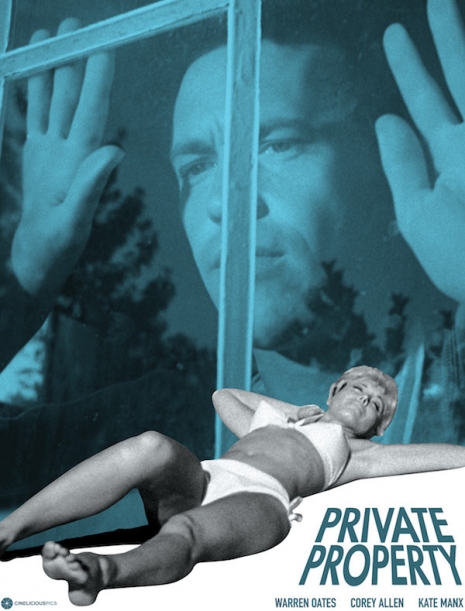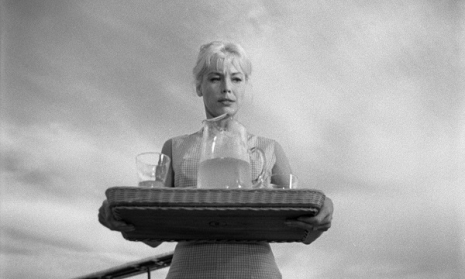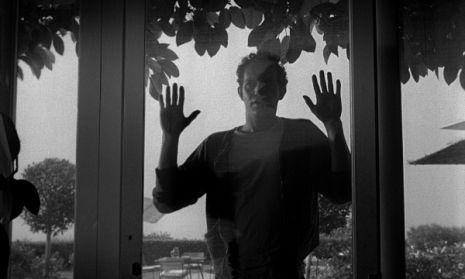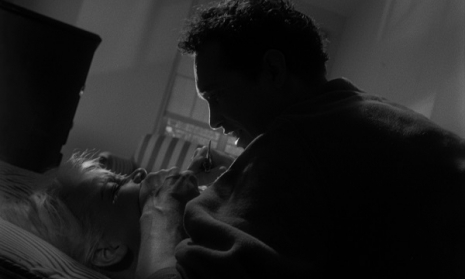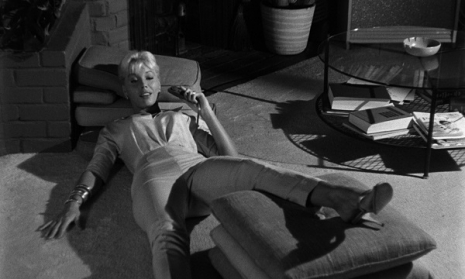
Set to the tune of Massive Attack’s “Angel,” Serena Bramble’s 2009 remix project “The Endless Night: A Valentine to Film Noir” is a “video love letter that distills film noir movies into their atmospheric essence.”
Bramble, an editor and writer, had this to say about her work:
“After many long hours, this is my tribute to my favorite genre, to the dark shadows and the profound despair of the soul. I tried to include as many as I could get my hands on, though there are obviously some that I overlooked, some accidently (the absence of The Sweet Smell of Success and White Heat are the most obvious and shameful), some purposefully (save Sam Fuller’s 1964 pulp masterpiece The Naked Kiss, I decided to stay strictly within the 18-year period between 1940 and 1958, so absolutely no neo-noirs like Chinatown, and even more importantly, absolutely no colors).
“If this should be deleted for copyright infringement (this is for recreational use only, not for profit; all film clips and the music by Massive Attack belong to their respective copyright holders), I’ve had a hell of a time doing it. And just in case I glorified violence and smoking a bit too much, as a semi-pacifist, nonsmoking woman, I can only quote Samuel Fuller: “I hate violence. That has never prevented me from using it in my films.”
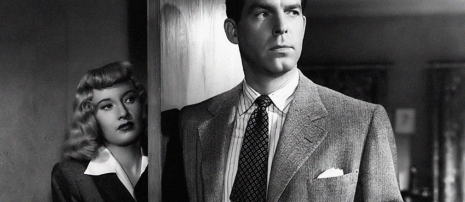
The films, dangerous ladies and toxic dudes seen during Bramble’s epic supercut are:
The Letter (1940, William Wyler. Bette Davis)
The Maltese Falcon (1941, John Huston. Humphrey Bogart, Mary Astor)
Shadow Of A Doubt (1943, Alfred Hitchcock. Joseph Cotten)
Double Indemnity (1944, Billy Wilder. Barbara Stanwyck, Fred MacMurray)
Murder, My Sweet (1944, Edward Dmytryk. Dick Powell)
Scarlet Street (1945, Fritz Lang. Edward G. Robinson, Joan Bennett)
Laura (1945, Otto Preminger. Gene Tierney)
Detour (1945, Edgar G. Ulhmer. Ann Savage)
Notorious (1946, Alfred Hitchcock. Cary Grant, Ingrid Bergman)
Gilda (1946, Charles Vidor. Rita Hayworth)
The Killers (1946, Robert Siodmak. Ava Gardner, Burt Lancaster)
The Big Sleep (1946, Howard Hawks. Humphrey Bogart)
The Postman Always Rings Twice (1946, Tay Garnett. John Garfield, Lana Turner)
The Lady From Shanghai (1947, Orson Welles. Rita Hayworth, Welles)
Out Of The Past (1947, Jacques Tourneur. Jane Greer, Robert Mitchum)
Brute Force (1947, Jules Dassin. Burt Lancaster)
Force Of Evil (1948, Abraham Polonsky. John Garfield, Marie Windsor)
The Set-Up (1949, Robert Wise. Robert Ryan)
The Third Man (1949, Carol Reed. Orson Welles)
Criss Cross (1949, Siodmak. Burt Lancaster, Yvonne De Carlo)
Gun Crazy (1950, Joseph H. Lewis. John Dall, Peggy Cummins)
In A Lonely Place (1950, Nicholas Ray. Humphrey Bogart, Gloria Grahame)
The Asphalt Jungle (1950, Huston. Sterling Hayden)
Night And The City (1950, Jules Dassin. Richard Widmark, Gene Tierney)
Sunset Blvd. (1950, Billy Wilder. Gloria Swanson, William Holden)
Ace In The Hole (1951, Billy Wilder. Kirk Douglas, Jan Sterling)
Angel Face (1952, Otto Preminger. Jean Simmons)
Pickup On South Street (1953, Samuel Fuller. Richard Widmark)
The Big Heat (1953, Fritz Lang. Gloria Grahame, Lee Marvin)
Kiss Me Deadly (1955, Robert Aldrich. Gaby Rodgers)
Night Of The Hunter (1955, Charles Laughton. Robert Mitchum, Lillian Gish)
The Killing (1956, Stanley Kubrick. Sterling Hayden)
Elevator To The Gallows (1958, Louis Malle. Jeanne Moreau, Maurice Ronet)
Touch Of Evil (1958, Orson Welles)
The Naked Kiss (1964, Samuel Fuller. Constance Towers)
Watch “The Endless Night: A Valentine to Film Noir,” after the jump…






